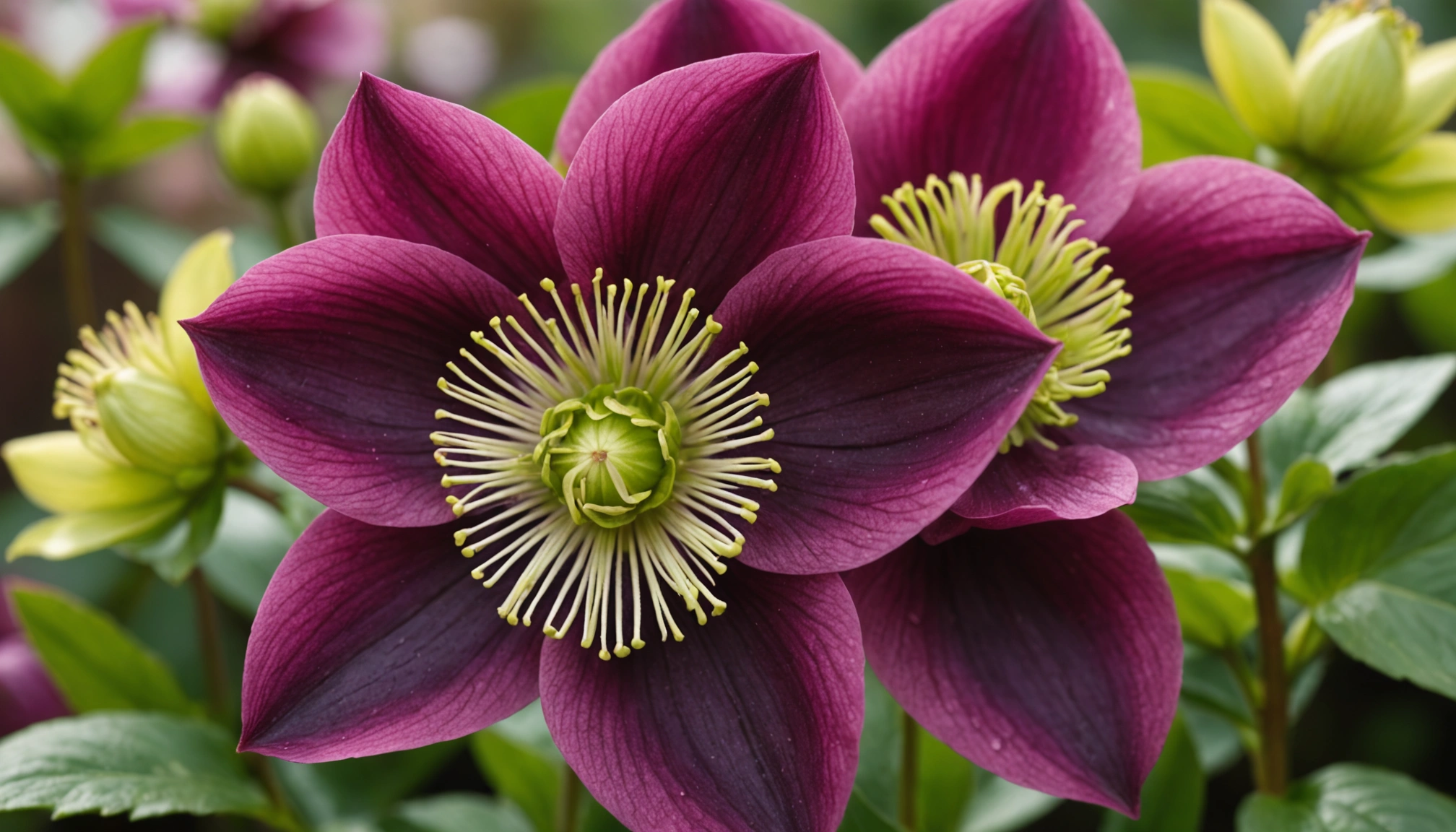The Enigmatic Beauty of Hellebores: Celebrating Spring's Arrival in Garden Centers with a Scientific Twist
- meagan bains
- Mar 2
- 4 min read
As winter's chill fades away, and warmer days take center stage, the arrival of spring brings a refreshing sense of vitality. Visiting your local garden center can feel like stepping into a vibrant new world, where colorful blooms awaken, and the rich fragrance of earthy soil fills the air. Among the first flowers to grace our gardens is the stunning hellebore, known for its captivating beauty even in challenging conditions. In this post, we will uncover the charm of hellebores, as well as the vital science of soil health that plays a crucial role in their success during this lively season.
The Alluring Hellebore: Nature’s Resilient Beauty
Hellebores are often referred to as the “Lenten Rose” or “Christmas Rose,” and they are perennial plants that bloom as winter recedes. Their flowers come in various colors—from deep purples to soft pinks—making them ideal for adding hues to your early spring garden.
What truly sets hellebores apart is their remarkable ability to thrive in shady conditions, as many spring flowers require full sunlight. Their resilience makes them low-maintenance plants, calling only for occasional care, while still providing a breathtaking display. Studies suggest that over 40% of home gardeners prefer flowers that do not require intensive maintenance, and hellebores fit perfectly within this preference.
The Thrill of Spring: Garden Centers Reopening
With rising temperatures comes the excitement of garden centers opening their doors once more. A stroll through these vibrant spaces awakens the senses, transforming memories of colder months into feelings of hope and renewal.
Imagine walking through rows of flowers as the smell of fresh soil reels you in, creating a sensory experience that goes beyond mere sight. Engaging with soil and plants can evoke tranquility—it's therapy for the soul. In fact, spending time in green spaces can reduce stress by up to 70%, promoting both mental and physical well-being.
The Science of Soil: Understanding Soil Depressions
As we appreciate spring and the beauty of hellebores, it’s important to explore how soil management impacts plant growth. Soil compaction, or "soil depression," can occur when soil is packed down, limiting its ability to retain water and nutrients effectively.
For hellebores, which thrive in slightly acidic and well-drained soil, soil health is critical. Compacted soil can cause poor drainage and hinder growth. Research indicates that plants in loosely aerated soil have root systems that are nearly 30% more efficient at absorbing water and nutrients compared to those in compacted soil.
Gardeners can take several steps to improve soil conditions: adding organic matter such as compost and employing no-till practices can reduce compaction, ensuring a nurturing environment for hellebores and other delicate plants to flourish.
Hellebores and Companion Planting
When creating a vibrant spring garden, thinking about companion planting—that is, growing different plants side by side for mutual benefits—can enhance your gardening efforts. Hellebores pair wonderfully with daffodils and primroses, creating a beautiful contrast against their dark foliage.
Adding companion plants serves more than simply looking good; they can also attract beneficial pollinators like bees and butterflies while deterring harmful pests. Studies show that gardens with mixed plantings can increase overall production by 20% due to improved pollinator activity and pest control.
Choosing the right companions can foster a balanced ecosystem, ensuring that each plant thrives and contributes to the beauty and health of the garden.

Cultivating a Hellebore Paradise
Growing hellebores at home can be an enjoyable and fulfilling project. Their low-maintenance nature makes them suitable for both beginner and experienced gardeners looking to expand their floral collection.
To successfully cultivate hellebores, consider these straightforward tips:
Soil Preparation: Ensure that the soil is well-drained and rich in organic matter. Conducting a soil pH test can provide insights to create the right conditions for growth.
Placement: Hellebores prefer partial to full shade. Choose an area in your garden that receives filtered sunlight during the day.
Watering: Regular watering is essential, particularly during dry periods. However, be cautious not to overwater, as hellebores thrive in slightly drier conditions.
Mulching: A layer of organic mulch can help retain soil moisture and protect roots from extreme temperatures.
Fertilization: Use a balanced, slow-release fertilizer to promote healthy growth and abundant blooming.
By following these practical steps, you can create your own stunning hellebore paradise, enhancing the beauty of your garden this spring.
Celebrate the Beauty of Spring with Hellebores
As spring arrives, the reopening of garden centers brings joy to gardening enthusiasts, offering an opportunity to enjoy horticulture's beauty. Hellebores, with their enchanting blooms and unique growing preferences, are the embodiment of this dynamic season.
Understanding the science of soil health—especially the implications of soil compaction—allows farmers and backyard gardeners to support their plants effectively. Through thoughtful companion planting and appropriate care, your spring garden can thrive, creating a place filled with life and color.
So take a moment to visit your local garden center, inhale deeply the scent of spring, and consider adding the charming hellebore to your gardening collection. The rebirth of nature is not just visually captivating; it reminds us of the intricate connections that sustain life. Happy Gardening!











Comments